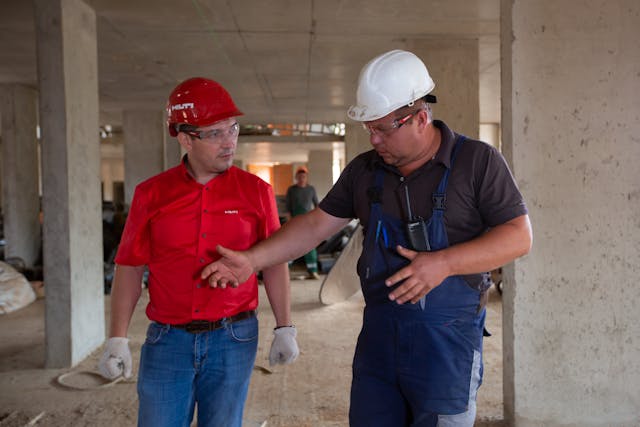- Thorough site evaluation is crucial for understanding terrain challenges and opportunities.
- Designing for stability includes considering elevated foundations and retaining walls.
- Select durable materials and utilize specialized equipment for construction on rough terrain.
- Environmental considerations involve minimizing disturbance and implementing sustainable practices.
- Safety protocols, proper training, and obtaining permits are essential for worker safety and compliance.
Building your dream home is an exciting endeavor, but when faced with rough terrain, the task can seem daunting. Whether your plot of land sits atop a rugged hillside, amidst dense forests, or along a rocky coastline, constructing a home on challenging terrain requires careful planning and execution. This guide will explore some of the best tips for success when building on rough terrain, ensuring your project progresses smoothly and results in the home you’ve always envisioned.
1. Site Evaluation and Preparation
Before breaking ground, thorough site evaluation and preparation are essential to understand the unique challenges and opportunities presented by the terrain.
Conduct a Detailed Site Survey
Hire a professional surveyor to assess the topography, soil composition, drainage patterns, and any potential hazards, such as steep slopes or unstable ground. This information will inform the design and construction process, helping to mitigate risks and optimize the building’s placement.
Clear Vegetation and Debris Safely
Clearing vegetation and debris from the site may be necessary but must be done with caution to minimize environmental impact and prevent erosion. Consult with local authorities to ensure compliance with regulations regarding land clearing, especially in environmentally sensitive areas.
2. Design Adaptations for Stability
Designing a home that harmonizes with the natural landscape while ensuring structural stability is crucial when building on rough terrain.

Consider Elevated Foundations
Elevated foundations, such as pilings or stilts, can provide stability on uneven terrain while minimizing disturbance to the land below. This approach is particularly effective in flood-prone areas or sites with poor soil quality.
Incorporate Retaining Walls
Retaining walls can help level the building site and prevent soil erosion on sloped terrain. Choose durable materials and design the walls to blend seamlessly with the landscape for both functional and aesthetic appeal.
3. Construction Methods and Materials
Selecting the right construction methods and materials is essential for building a resilient home that can withstand the challenges of rough terrain.
Choose Durable Building Materials
Opt for high-quality, durable materials that can withstand the elements and potential impacts from the surrounding environment. This includes weather-resistant siding, reinforced concrete, and impact-resistant roofing materials.
Utilize Specialized Equipment
Incorporating specialized equipment, such as a durable all-terrain crane, can streamline the construction process on rough terrain. These versatile machines are designed to navigate challenging landscapes while lifting heavy materials and equipment with precision and safety.
4. Environmental Considerations
Building on rough terrain often involves navigating sensitive ecosystems and natural habitats, requiring careful attention to environmental considerations.
Minimize Disturbance
Minimize disturbance to the surrounding environment by limiting construction footprint, preserving existing vegetation where possible, and implementing erosion control measures throughout the building process.
Implement Sustainable Practices
Incorporate sustainable building practices such as rainwater harvesting, passive solar design, and energy-efficient systems to reduce the environmental impact of your home and enhance its long-term sustainability.
5. Safety Protocols and Regulations
Ensuring the safety of workers and adhering to local regulations are paramount when building on rough terrain.
Provide Proper Training and Equipment
Equip workers with the necessary training and safety equipment to navigate challenging terrain and mitigate potential hazards. This includes proper footwear, harnesses, and fall protection gear.

Obtain Necessary Permits
Obtain all required permits and approvals before commencing construction to ensure compliance with local building codes and regulations. Work closely with regulatory authorities throughout the project to address any concerns and maintain a safe working environment.
6. Budgeting and Project Management
Effective budgeting and project management are essential for the success of any construction project, especially when building on rough terrain.
Account for Additional Costs
Budget for potential additional costs associated with site preparation, specialized equipment rental, and unforeseen challenges that may arise during construction on rough terrain.
Hire Experienced Professionals
Engage experienced architects, engineers, and contractors with expertise in building on challenging terrain to ensure the project is completed efficiently and to a high standard.
Building a home on rough terrain presents unique challenges, but with careful planning, adaptation, and the right resources, it is entirely achievable. By conducting thorough site evaluations, designing for stability, selecting appropriate construction methods and materials, considering environmental factors, prioritizing safety, and effectively managing your budget and project, you can successfully bring your vision to life amidst even the most rugged landscapes. Remember, each step you take brings you closer to realizing your dream home in harmony with nature’s wild beauty.

